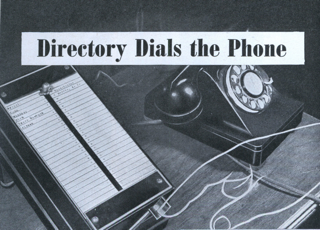intuition
noun
the ability to understand something immediately, without the need for conscious reasoning.
“Intuitive” sounds like a great property for an interface to have, but in The Humane Interface (pages 150-152), Jeff Raskin calls it a harmful distraction:
(pages 150-152), Jeff Raskin calls it a harmful distraction:
Many interface requirements specify that the resulting product be intuitive, or natural. However, there is no human faculty of intuition…When an expert uses what we commonly call his intuition to make a judgment … we find that he has based his judgment on his experience and knowledge. Often, experts have learned to use methods and techniques that non-experts do not know… Expertise, unlike intuition, is real.
When users say that in interface is intuitive, they mean that it operates just like some other software or method with which they are familiar.…
Another word that I try to avoid in discussing interfaces is ‘natural’. Like ‘intuitive’, it is usually not defined. An interface feature is natural, in common parlance, if it operates in such a way that a human needs no instruction. This typically means that there is some common human activity that is similar to the way the feature works. However, it is difficult to pin down what is meant by ‘similar’. … the term ‘natural’ (can also equate) to ‘very easily learned’. Although it may be impossible to quantify naturalness, it is not to difficult to quantify learning time.
…
The belief that interfaces can be intuitive and natural is often detrimental to improved interface design. As a consultant, I am frequently asked to design a “better” interface to a product. Usually, an interface can be designed such that, in terms of learning time, eventual speed of operation (productivity), decreased error rates, and ease of implementation, it is superior to both the client’s existing products and competing products. Nonetheless, even when my proposals are seen as significant improvements, they are often rejected on the grounds that they are not intuitive. It is a classic Catch-22: The client wants something that is sigificantly superior to the competition. But if it is to be superior, it must be different. (Typically, the greater the improvement, the greater the difference.) Therefore, it cannot be intuitive, that is, familiar. What the client wants is an interface with at most marginal differences from current practice — which almost inevitably is Microsoft Windows — that, somehow, makes a major improvement.
There are situations where familiarity is the most important concern, but they are rare. One example is a kiosk at a tourist attraction. Millions of people will use it only once, and they must be able to use it as soon as they touch it (because they will walk away rather then spend their vacation reading a manual). And in such cases, mimicking the most promiscuously used interface you can find, warts and all, makes sense — if that means more people will already know how to use it.
Outside of rare exceptions, software that people use enough to justify buying is used repeatedly. The value of the product is what people make with it, not what they can do with it the moment they open the box. Designing for the illusion of “intuitiveness” is clearly the wrong choice when it harms the long-term usefulness of the product.
This is not an excuse for a crappy first-run experience! The first impression is still the most important impression. By definition, the less familiar something is, the more exceptional it is. And an exceptionally good first impression is what you are after — so unfamiliarity can work to your advantage here. It is more work to design an exceptional first-run experience, but good design is always more work.
This is not a rational for being different just to be different. It is a rational for being different, when different is measurably better. For something to be measurably better, it first needs to be measurable. That means using precise terms, like “familiar” instead of “intuitive”, and “quick to learn” not “natural”.
